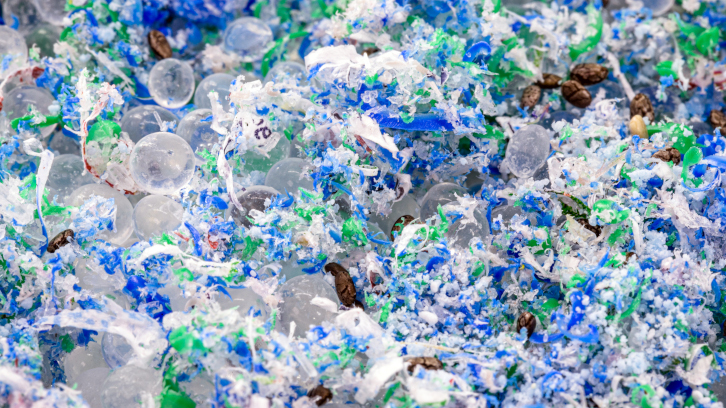Carcinogenic potential of micro- and nanoplastics

People are exposed to microplastics and nanoplastics, and we do not know the potential of these pollutants to induce cancer in the long term. Researchers from the Mutagenesis Group have carried out a review of the scientific literature on this relationship. Most of the papers reviewed indicate that these pollutants are capable of inducing effects related to the development of cancer in humans.
Microplastic and nanoplastic (MNPLs) pollution is a global problem. Humans, as part of the ecosystem, are exposed to these small plastic particles by different routes; mainly by inhalation when we breathe and by the digestive route, through the food and drink we ingest. Due to the ability of MNPLs to accumulate in tissues and organs, and their difficult removal, uncertainty arises about the potential of these particles to induce cancer in the long term.
To analyse the carcinogenic potential of plastic particles, a literature review was conducted in which a total of 133 articles were analysed. Of these, we selected 26 articles following the inclusion criteria described in the original paper (Domenech, 2023). We did not expect to find studies that directly evaluated the incidence of tumours and cancer in humans or rodents exposed to MNPLs, for this reason, the literature review also included studies that determine effects associated with the development of cancer (oxidative stress, inflammation, genetic damage, fibrosis, bioaccumulation, or long-term toxicity).
Different cell types treated with nanoplastics or polystyrene (PS) microplastics showed induction of inflammation and cell proliferation, as well as markers associated with the process of carcinogenesis (e.g. increased cell growth rate, invasion and migration, or multidrug resistance, among others). On the other hand, using cells more prone to undergo cell transformation (the process by which a normal cell adopts the features of a cancer cell), which were exposed to PS nanoplastics for 6 months, markers directly associated with the carcinogenesis process were identified. Furthermore, simultaneous exposure of these cells to PS nanoplastics and arsenic (a known carcinogen) increased the frequency of typical cancer cell traits compared to that shown by cells treated with PS or arsenic alone.
Studies in rodent models found markers of inflammation and fibrosis, accumulation of MNPLs in tissues, and other markers associated with the process of carcinogenesis (tumour growth, or changes in the expression of genes associated with digestive tract diseases and cancer). Micro- and nanoplastics of PS, poly(lactic-co-glycolic acid) (PLGA), and polyethylene (PE) were used in these studies. DNA damage was also found in rodents after being treated with PS nanoplastics.
In conclusion, although there is insufficient work investigating the carcinogenic potential of plastics, most of the studies reviewed indicated that MNPLs are capable of inducing effects related to the development of cancer in humans.
Julia Catalán
Finnish Institute of Occupational Health (Helsinki, Finlàndia)
julia.catalan@ttl.fi
Josefa Domenech
Finnish Institute of Occupational Health (Helsinki, Finlàndia)
josefa.domenech@ttl.fi
Alba Hernández Bonilla
Departament de Genètica i de Microbiologia
Universitat Autònoma de Barcelona
alba.hernandez@uab.cat
References
Domenech, J., Annangi, B., Marcos, R., Hernández, A., Catalán, J. Insights into the potential carcinogenicity of micro- and nano-plastics. Mutation Research/Reviews in Mutation Research, 791, 108453 (2023). https://doi.org/10.1016/j.mrrev.2023.108453


